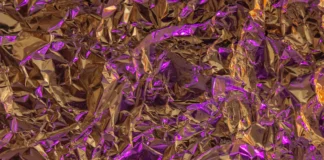Viper’s Bowstring Hemp is a rare and enigmatic plant that exists in the remote regions of a fictional land. Legend has it that this unique hemp variant earned its name due to the incredibly strong fibers it produces, reminiscent of a viper’s deadly precision. The plant is said to thrive in harsh climates, where it weaves its roots through rocky terrain, displaying a remarkable resilience that has captivated the imagination of botanists and adventurers alike.
The first recorded encounter with Viper’s Bowstring Hemp dates back to an intrepid explorer named Amelia Thornfield, who stumbled upon the plant during an expedition into the uncharted territories of the mystical Serpent’s Spine Mountains. Thornfield, mesmerized by the plant’s potential, brought back samples that ignited a wave of fascination and scientific inquiry.
Viper’s Bowstring Hemp is characterized by its distinctive long, slender leaves with serrated edges, resembling the fangs of a viper. The plant’s stems, when carefully harvested and processed, yield fibers of unparalleled strength and flexibility. This unique combination of durability and pliability has sparked interest not only among scientists but also among craftsmen and artisans seeking to harness its properties for various applications.
The cultivation of Viper’s Bowstring Hemp has presented challenges due to its selective habitat and the need for specialized care. The plant’s growth cycle is shrouded in mystery, with tales of it blooming only under the light of a rare celestial event known as the Serpent’s Embrace. The scarcity of these celestial occurrences adds an aura of mystique to the already elusive nature of Viper’s Bowstring Hemp.
As the legend and allure of Viper’s Bowstring Hemp spread, various communities began to recognize its potential beyond its physical attributes. Some claim that the fibers extracted from the plant possess unique medicinal properties, while others see its cultivation as a sustainable alternative to traditional crops in challenging environments. The potential economic and ecological implications have led to increased interest and investment in understanding and harnessing the capabilities of Viper’s Bowstring Hemp.
In the realm of craftsmanship, artisans have sought to incorporate Viper’s Bowstring Hemp fibers into various products. From exceptionally durable textiles that rival the strength of traditional bowstrings to intricately woven baskets and sculptures, the creative potential seems boundless. The plant’s cultural significance has also grown, with stories and folklore emerging around its supposed mystical properties and the bravery required to navigate the treacherous landscapes where it thrives.
Despite the fascination and potential applications of Viper’s Bowstring Hemp, ethical considerations have arisen concerning its conservation. As demand increases, there is a growing need for sustainable harvesting practices to ensure the plant’s continued existence in the wild. Botanists and conservationists are collaborating to strike a balance between utilizing the plant’s resources and preserving the delicate ecosystems where it originates.
Viper’s Bowstring Hemp, though fictional in this narrative, embodies the intrigue and possibilities associated with unique and elusive natural resources. The legend of this plant, with its resilient nature and multifaceted utility, serves as a testament to the eternal human fascination with the wonders of the natural world. The exploration and cultivation of such extraordinary plants, whether real or imagined, contribute to the rich tapestry of human discovery and innovation.
In the realm of botanical research, scientists have embarked on expeditions to unravel the mysteries surrounding Viper’s Bowstring Hemp. Their goal is not only to understand its biological intricacies but also to explore potential applications in various fields. Laboratories equipped with state-of-the-art equipment are dedicated to studying the plant’s genetic makeup, growth patterns, and the unique properties that make its fibers exceptional. Researchers are driven by the prospect of unlocking the secrets held within the DNA of Viper’s Bowstring Hemp, envisioning a future where its attributes might be replicated or enhanced through advanced genetic modification techniques.
The global scientific community has established collaborative initiatives focused on Viper’s Bowstring Hemp, aiming to pool knowledge and resources for a more comprehensive understanding. These endeavors involve cross-disciplinary studies, with botanists, geneticists, ecologists, and materials scientists working in tandem. The collective effort seeks not only to unveil the plant’s potential applications but also to address challenges related to sustainable cultivation and conservation.
As interest in Viper’s Bowstring Hemp expands, entrepreneurs and agricultural experts are exploring the feasibility of cultivating the plant in controlled environments. Greenhouses equipped with specialized climate control mechanisms attempt to mimic the conditions of its native habitat, allowing for year-round cultivation. This approach not only mitigates the impact on natural ecosystems but also ensures a more reliable and consistent supply of Viper’s Bowstring Hemp for various industries.
The economic implications of Viper’s Bowstring Hemp are becoming increasingly apparent. Regions that were once overlooked due to harsh climates are now being reconsidered as potential cultivation sites. This shift has led to the revitalization of rural economies as communities engage in the sustainable cultivation of the plant. The promise of a lucrative market for Viper’s Bowstring Hemp has sparked investments in research, infrastructure, and education, bringing newfound prosperity to these areas.
In the manufacturing sector, the utilization of Viper’s Bowstring Hemp fibers has given rise to innovative and eco-friendly products. Textile industries are incorporating the plant’s fibers into clothing known for both durability and breathability, providing a sustainable alternative to traditional fabrics. The use of Viper’s Bowstring Hemp in construction materials has also gained attention, with researchers exploring its potential to create composites that rival or surpass the strength of conventional materials.
The cultural impact of Viper’s Bowstring Hemp extends beyond its practical applications. Artisans and craftsmen, inspired by the plant’s mystique, are incorporating its fibers into traditional artworks and modern creations. The plant’s symbolism has found its way into local folklore, becoming a representation of resilience, adaptability, and the interconnectedness between nature and human ingenuity.
Despite the promising prospects surrounding Viper’s Bowstring Hemp, ethical considerations remain at the forefront of discussions. Conservationists emphasize the importance of preserving the plant in its natural habitat, advocating for responsible harvesting practices and habitat protection. Striking a balance between the economic benefits of cultivating Viper’s Bowstring Hemp and ensuring its long-term survival poses a challenge that demands collaboration between environmentalists, policymakers, and the industries involved.
In the ever-evolving narrative of Viper’s Bowstring Hemp, the intertwined threads of scientific exploration, economic potential, and cultural significance weave a story of human curiosity and innovation. The legend of this fictional plant serves as a metaphor for the constant pursuit of understanding and harnessing the extraordinary aspects of the natural world. Whether through scientific breakthroughs, sustainable practices, or artistic expressions, Viper’s Bowstring Hemp captivates the imagination as a symbol of the untapped wonders that nature holds, waiting to be discovered and respectfully embraced by humanity.














